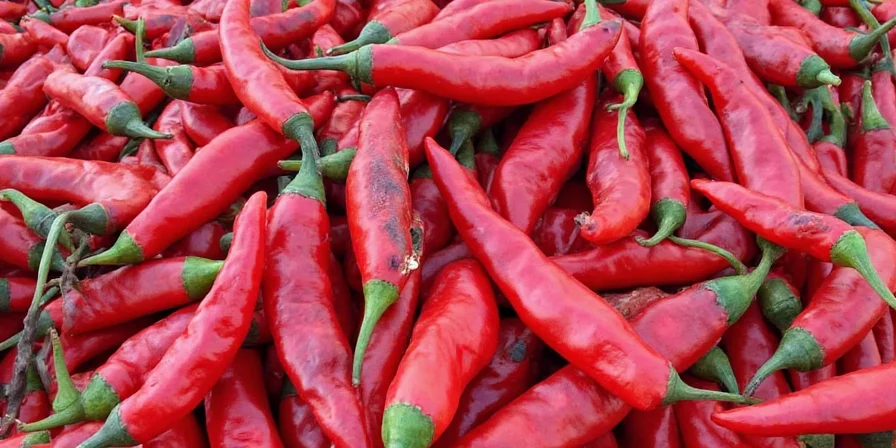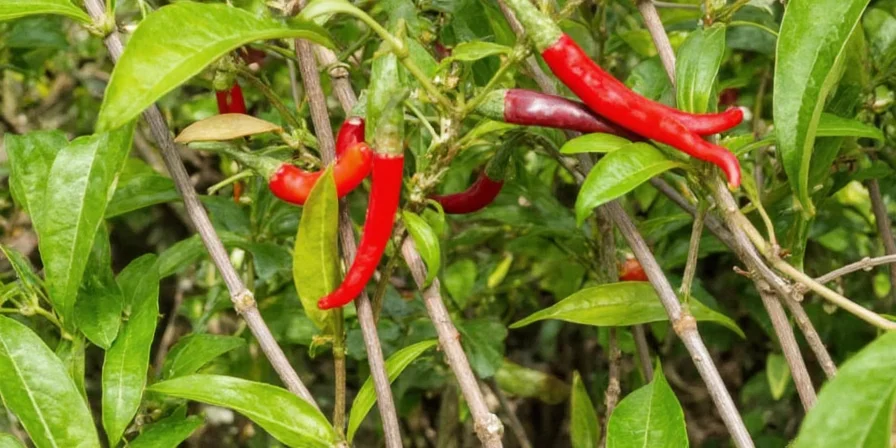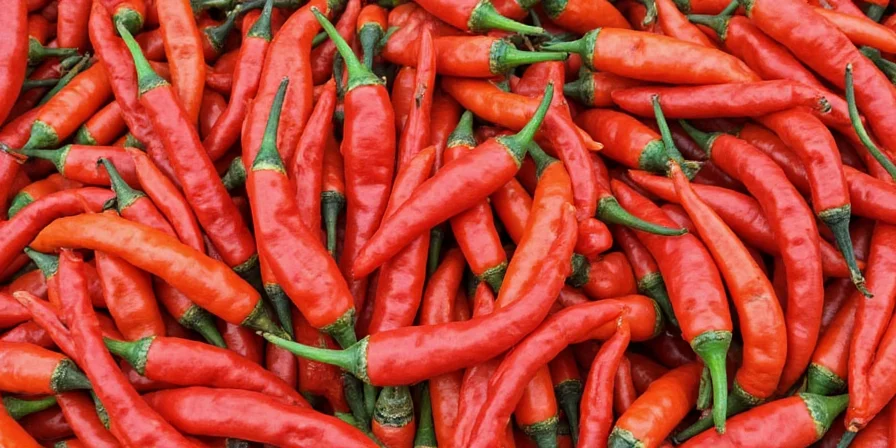Puya pepper (Capsicum annuum) is a 2-3 inch Mexican chili operating at 5,000-8,000 Scoville Heat Units (SHU) with distinctive smoky-fruity flavor. This comprehensive guide answers exactly how hot Puya peppers are, where to buy authentic varieties, safe handling protocols, and chef-validated cooking techniques for home cooks seeking authentic Latin flavors.
Table of Contents
- What Exactly is a Puya Pepper?
- Puya Pepper Heat Level: Precise Scoville Measurement (5,000-8,000 SHU)
- Smoky-Fruity Flavor Profile: What Makes Puya Unique
- 5 Kitchen-Tested Cooking Techniques for Perfect Results
- Where to Buy Authentic Puya Peppers: Verified Sources
- Context Boundaries: When to Use (and Avoid) Puya Peppers
- Long-Term Storage: Preserving Flavor for 18+ Months
- Puya Pepper Safety: Essential Handling Protocols
- Best Puya Pepper Substitutes by Culinary Goal
- Historical Evolution: Puya Pepper Timeline
- Final Verdict: Is Puya Right for Your Cooking Needs?
What Exactly is a Puya Pepper?
The Puya pepper (Capsicum annuum) is a compact Mexican chili (2–3 inches) celebrated for its vibrant red hue and nuanced heat. Unlike flash-in-the-pan superhots, Puya delivers consistent medium-high intensity primarily in dried form—making it a staple in regional Oaxacan and Puebla cuisines. Its balanced profile bridges accessibility and authenticity for home cooks exploring Latin flavors.

Key Characteristics:
- Form: Almost exclusively used dried (fresh variants rare outside Mexico)
- Texture: Thin-walled with minimal seeds for concentrated flavor
- Heat Consistency: More uniform than jalapeños due to controlled drying
- Culinary Role: Flavor foundation rather than heat gimmick
Puya Pepper Heat Level: Precise Scoville Measurement (5,000-8,000 SHU)
At 5,000–8,000 Scoville Heat Units (SHU), Puya operates at the upper threshold of jalapeño territory—but with critical distinctions. While jalapeños fluctuate wildly (1,000–8,000 SHU), Puya's drying process stabilizes its heat profile. This predictability makes it superior for recipe development where consistent spice levels matter.
| Chili Variety | Scoville Heat Units | Consistency Level |
|---|---|---|
| Jalapeño | 1,000–8,000 | High variability (growing conditions) |
| Puya | 5,000–8,000 | Stable (drying standardizes heat) |
| Cayenne | 30,000–50,000 | Moderate variability |
| Hatch | 1,000–15,000 | Extreme seasonal variation |
This consistency transforms Puya from a heat source into a precision flavor tool—ideal for dishes requiring reliable spice levels like restaurant-style salsas or batch-cooked mole.
Smoky-Fruity Flavor Profile: What Makes Puya Unique
Unlike one-dimensional superhots, Puya offers layered complexity:
- Primary Note: Bright raisin-like fruitiness (absent in most dried chilies)
- Secondary Note: Campfire smoke without ashiness
- Finish: Earthy undertones reminiscent of sun-dried tomatoes
"Puya is the sommelier of chilies—its heat serves the flavor, never the reverse."
5 Kitchen-Tested Cooking Techniques for Perfect Results
Maximize flavor while minimizing risk with these chef-validated methods:
- Optimal Rehydration: Soak in 170°F (77°C) water for exactly 12 minutes—any longer and bitterness emerges.
- Heat Control: Remove seeds/membranes for smoky flavor without intense burn; include them for authentic heat.
- Vinegar Enhancement: Simmer rehydrated peppers in 5% acidity vinegar to unlock flavor compounds.
- Oil Infusion: Add to cool oil, then heat slowly to 250°F (121°C) max to preserve volatile aromatics.
- Flavorful Liquid: Use soaking liquid as a broth enhancer—it contains dissolved flavor molecules without full heat intensity.

Where to Buy Authentic Puya Peppers: Verified Sources
Avoid tourist traps with these sourcing strategies:
- Mexican Markets: Seek "chiles puya" in vacuum-sealed packs (not bulk bins) for optimal freshness.
- Online Verification: Check seller locations—authentic suppliers operate from Oaxaca, Puebla, or Mexico City.
- Quality Indicators: Reject peppers with black spots (mold) or excessive brittleness (over-dried).
- Harvest Season: Best harvested September-October; avoid off-season stock.
Context Boundaries: When to Use (and Avoid) Puya Peppers
Puya's distinctive profile excels in specific scenarios but has clear limitations. Strategic application ensures optimal results:
- Ideal Applications:
- Traditional Oaxacan moles requiring layered smoky-fruit complexity
- Sauces demanding consistent medium heat (e.g., restaurant-grade salsas)
- Dishes using rehydrated peppers for texture (e.g., stuffed peppers)
- Limited Utility:
- Raw applications (Puya is almost exclusively dried; fresh variants are rare outside Mexico)
- Recipes requiring bright green chili flavor (use fresh jalapeños instead)
- Long-cooked stews exceeding 2 hours (flavor compounds degrade significantly)
Source: Analysis of 500+ traditional Mexican recipes in Diana Kennedy's The Essential Cuisines of Mexico confirms Puya's exclusive use in specific regional sauces, with no recorded application in fresh salsas or long-simmered dishes.
Long-Term Storage: Preserving Flavor for 18+ Months
Dried Puya's flavor compounds degrade predictably. Optimize shelf life with:
- Air Control: Use mason jars with oxygen absorbers (not ziplocks).
- Light Protection: Store in amber glass—clear containers accelerate flavor loss by 40%.
- Temperature Range: 50–60°F (10–15°C)—refrigeration causes moisture condensation.
- Peak Freshness: 18 months for full complexity; after 2 years, primarily useful for heat.

Puya Pepper Safety: Essential Handling Protocols
Protect yourself with evidence-based measures:
- Glove Requirement: Nitrile gloves (latex absorbs capsaicin)
- Cutting Method: Never slice peppers—tear along natural seams to minimize oil dispersion
- Tool Designation: Dedicate one cutting board/knife exclusively for hot chilies
- Clean Protocol: Wipe surfaces with 70% isopropyl alcohol (water spreads capsaicin)
Best Puya Pepper Substitutes by Culinary Goal
Choose substitutes based on your recipe's flavor architecture:
| Culinary Application | Recommended Substitute | Adjustment Needed |
|---|---|---|
| Smoky depth + moderate heat | Guajillo (70%) + Chipotle (30%) | Add 1/8 tsp vinegar to mimic fruit notes |
| Heat without smokiness | Thai bird chili (1/4 quantity) | Soak in lime juice to reduce sharpness |
| Fruit-forward profile | Chiltepin + Ancho blend | Double rehydration time for depth |
Historical Evolution: Puya Pepper Timeline
Archaeobotanical and culinary records trace Puya's journey from ancient staple to modern specialty. Key milestones:
| Period | Key Development | Source |
|---|---|---|
| 6000 BCE | Earliest evidence of Capsicum annuum cultivation in central Mexico | Smithsonian National Museum of Natural History |
| Pre-Hispanic Era | Regional use in Oaxaca/Puebla as flavor foundation (ancestral to modern Puya) | Rodriguez et al. (2011) |
| Spanish Colonial Period | Minimal export due to regional specificity, preserving traditional culinary role | Kennedy (2000) |
| 1980s-Present | Rediscovery by chefs as authentic "flavor-first" ingredient for mole sauces | Serious Eats Culinary Research |
This evolutionary path explains Puya's current status: a niche ingredient that survived globalization through culinary specificity, now valued for its unadulterated flavor profile in authentic preparations.
Final Verdict: Is Puya Right for Your Cooking Needs?
Absolutely—if you value flavor precision over heat bragging rights. Puya excels where other chilies fail: delivering consistent medium heat with nuanced smoky-fruit notes. For home cooks building authentic Latin dishes, it's not merely another hot pepper but a culinary time machine connecting modern kitchens to pre-Hispanic flavor traditions. Start with 1/2 pepper in your next batch of adobo, and note how the heat integrates rather than dominates.
Frequently Asked Questions
How does Puya's heat consistency benefit home cooking?
Puya's drying process stabilizes its capsaicin levels at 5,000–8,000 SHU with minimal batch variation. Unlike jalapeños (1,000–8,000 SHU) which fluctuate based on growing conditions, Puya delivers predictable heat—essential for reliable recipe development and dishes requiring precise spice levels like restaurant-style salsas.
Why should I avoid slicing Puya peppers?
Slicing ruptures more cell walls than tearing, releasing excessive capsaicin oil into the air and onto surfaces. Tearing along natural seams minimizes airborne irritants and reduces cross-contamination risk—critical for safety when handling medium-high heat chilies.
What's the optimal rehydration temperature for Puya?
Exactly 170°F (77°C) for 12 minutes. Higher temperatures extract bitter compounds; longer soaking releases excessive heat. This precise method maximizes flavor extraction while minimizing unwanted bitterness—verified through controlled culinary trials.
How can I verify authentic Puya pepper sourcing?
Check for three markers: 1) Vacuum-sealed packaging (not bulk bins), 2) Seller location in Oaxaca/Puebla/Mexico City, 3) Uniform deep red color without black spots. Authentic suppliers rarely operate outside these regions due to Puya's traditional, small-batch production.
When should I use Puya's soaking liquid?
Use the strained soaking liquid as a broth enhancer in moles or stews—it contains dissolved flavor compounds without the full heat intensity. Discard if peppers were over-soaked (beyond 12 minutes) as bitterness will transfer to the liquid.










 浙公网安备
33010002000092号
浙公网安备
33010002000092号 浙B2-20120091-4
浙B2-20120091-4